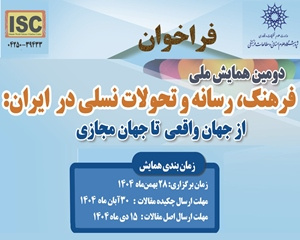چشم انداز مسئولیت حمایت در کنیا و بازتاب آن بر جامعه بین المللی (مقاله علمی وزارت علوم)
درجه علمی: نشریه علمی (وزارت علوم)
آرشیو
چکیده
زمینه و هدف : مسئولیت حمایت شامل مسئولیت پیش گیری، واکنش و بازسازی است. در این پژوهش چشم انداز مسئولیت حمایت در کنیا و بازتاب آن بر جامعه بررسی می شود. مواد و روش ها : روش انجام پژوهش توصیفی-تحلیلی است. ملاحظات اخلاقی : در انجام پژوهش اصالت متون، صداقت و امانت داری رعایت شده است. یافته ها : مسئولیت حمایت شامل مسئولیت پیش گیری، واکنش و بازسازی است. آنچه R2P را از ایده پیشین غلبه بر مداخلات بشردوستانه متمایز می سازد، اول، تأکید بر پیش گیری است و دوم اولویت آشکاری است که برای واکنش چند جانبه هماهنگ در مواجهه با بحران قائل است. سومین و شاید جدیدترین ویژگی آن، این است که سازمان های منطقه ای نقش مهمی در تسهیل حل منازعات و اجرای این مسئولیت دارند. نتیجه گیری : خشونت پس از انتخابات کنیا در سال 2007 به عنوان اولین مورد پیش گیری از R2P به طور گسترده مورد توجه قرار گرفت. کنیا به عنوان داستان موفقیت R2P دیده می شود: اقدام چندجانبه برای پیش گیری از تشدید اختلاف و وابستگی شدید به بازیگران منطقه ای. هدف این مقاله بررسی صحت وسقم این ادعاست. این مقاله سؤال می کند آیا پرونده کنیا واقعاً نمونه ای موفق از پیش گیری R2P بود؟ تجزیه وتحلیل مورد کنیا در نهایت منجر به این نتیجه گیری می شود که کاربرد R2P به موفقیت در تلاش برای مقابله با جنگ منجر نمی شود. این بافت کنیا بود که برای موفقیت میانجی گری مطلوب بود و بعید است که R2P بدون این عوامل احتمالی موفق می شد.Perspective of Responsibility to Protect at Kenya and its reflection on the international community
Background and Aim : Support responsibility includes responsibility, reaction and change. The perspective of support in Kenya and its reflection on the society is examined. Materials & Methods : The research method is descriptive and analytical. Ethical considerations : In this paper, the originality of the texts, honesty, and trustworthiness are observed. Findings : The Responsibility to Protect comprises the responsibility to prevent, to react, and to rebuild. What sets R2P apart from the previously prevailing idea of humanitarian intervention is, first, an emphasis on prevention, and second, a stated preference for a multilaterally coordinated response to crises. The third and perhaps newest feature of R2P is the idea that regional organizations have an important role to play in facilitating conflict resolution and the implementation of the Responsibility to Protect. Kenya’s post-election violence. Conclusion : in 2007 was widely viewed as the first case of ‘R2P prevention’. Kenya was seen as R2P’s success story – multilaterally orchestrated action to prevent an escalation of conflict, with heavy reliance on regional actors. This paper questions to what extent this account holds true, and whether the Kenyan case really was a successful instance of ‘R2P prevention’. An analysis of the Kenyan case ultimately leads to the conclusion that the application of R2P was, in fact, unrelated to the success of the conflict mitigation efforts. The Kenyan context was one which was favorable to the success of the mediation, and it is unlikely R2P would have succeeded without these contingent factors.








